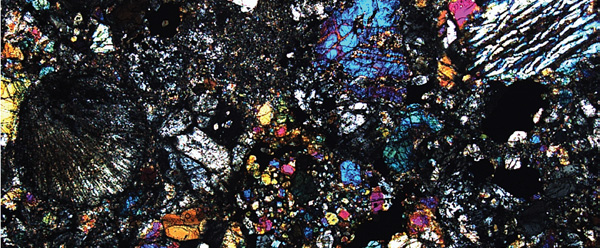
Photo Credit: Smithsonian Institution
In mid-April, the U.S. Army awarded the Whiting School of Engineering one of its biggest grants ever, worth as much as $90 million over 10 years, to form an institute that will push the frontiers of basic science to better understand what happens to materials in “extreme dynamic environments.”
The Hopkins Extreme Materials Institute (HEMI), to be headed by K.T. Ramesh, the Alonzo G. Decker Jr. Professor of Science and Engineering in the Department of Mechanical Engineering at Johns Hopkins, will unite the brightest minds in university laboratories and industry nationwide to conduct basic research, down to the atomic level, into what happens to metals, ceramics, polymers, and other materials subjected to extreme impact. One ultimate goal: to develop new materials to be used in lightweight protective armor for U.S. troops, civilians, and structures.
This push for fundamental research comes amid an increasingly insecure global environment, in which military, academic, and industry leaders agree on the need to better understand how materials behave under conditions such as nuclear explosions, massive volcanic eruptions, and even asteroid impact. “We are looking to understand the dynamic processes that occur in these events,” says Ramesh.
A quarter-inch Pyrex sphere strikes a cube of basalt and glass at one kilometer per second (roughly 2,200 miles per hour), or about three times the speed of sound. The impact is filmed at 23,000 frames per second.
HEMI builds upon work by Johns Hopkins researchers and collaborators at Caltech, the University of Delaware, and Rutgers University, as well as at the Army Research Laboratory. At Homewood, an initial team of 20 Hopkins researchers will work closely with colleagues at the Johns Hopkins Applied Physics Laboratory. Industry partners will get the job of turning new materials into protective armor and other products.
HEMI also is expected to aid agencies, including the Department of Defense, the Department of Energy, and NASA by providing models of cosmic events such as “planetary-scale impact problems,” or asteroid strikes.
In his Latrobe Hall office, Ramesh clicks through images on his computer, displaying a beautiful mosaic of brilliant color. It is the cross section of a meteorite that struck the Earth in Antarctica and was recovered in 1988. “If an asteroid is headed for Earth, do you break it up?” asks Ramesh. “If so, what kind of damage will you create? Do you try to knock it off course, and will it break up when you try to do that? These are the kinds of questions we will be answering.”




